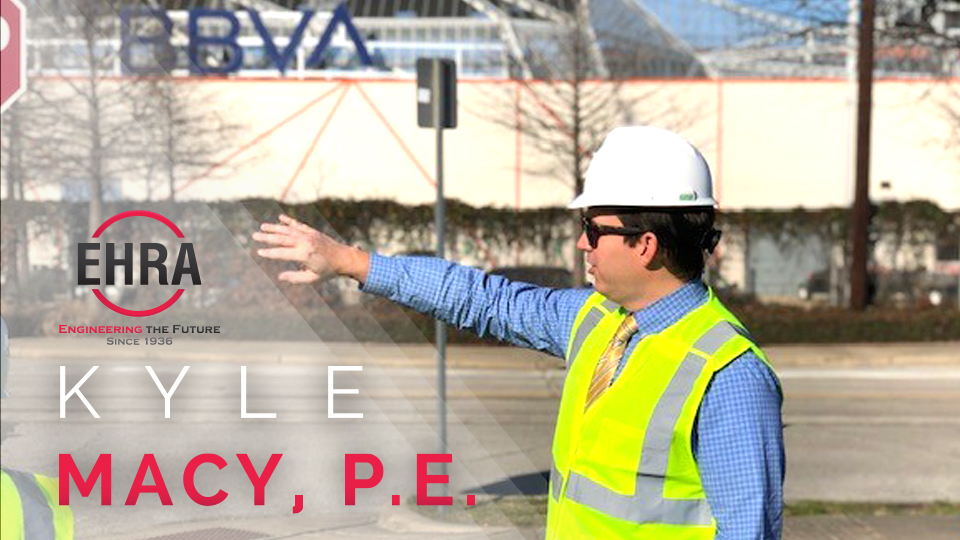

EHRA completed preliminary engineering, phase one environmental site assessment and schematic development for the widening of Northpark Dr. between US 59 and Woodland Hills Dr. EHRA also provided program management, drainage analysis and design, traffic engineering, environmental documentation and schematic design for the roadway, as well as grade separation at the Loop 494/UPRR railroad crossing.
EHRA conducted traffic operations and access management studies for the Northpark Dr. corridor. This corridor is approximately 2.2 miles long and has major signalized and unsignalized intersections and driveways that access various subdivisions and industrial developments. These studies laid the groundwork for the widening of Northpark Dr. from a four-lane boulevard cross-section to a six-lane boulevard complete street. The new street design includes low impact development drainage, conventional drainage, a grade separation at the UPRR crossing with mechanically stabilized earth retaining walls, two at-grade crossings for bi-directional frontage access, reconstruction of two concrete bridges over a diversion channel, intersection improvements, a roadway-adjacent multiuse path and traffic signal improvements.
Drainage analysis and design included hydrologic and hydraulic studies of both existing and proposed conditions to demonstrate that proposed project components would not adversely affect the 100-year floodplain in the area. The roadway and traffic designs contained horizontal and vertical alignments, cross-sections, plan and profile, sidewalk and bicycle accommodations, intersection layouts, traffic control plans and signing and pavement markings.
As the program management firm, EHRA coordinated with TxDOT, UPRR, the City of Houston Council District E, COH Planning and Development Department, COH Public Works and Engineering Department, Montgomery County, Harris County, HCFCD and area residents throughout the project.
EHRA completed a site-specific planning and visioning study for the proposed 470-acre San Jacinto Boulevard District (SJBD) in Baytown, Texas.
EHRA offered its Landscape Architectural services to complete a Parks and Trails Master Plan for the District.
On-going surveying for property acquisition and engineering design surveys of re-routing of Buffalo Bayou north of downtown Houston between North Main Street and McKee Street. Services to be provided include “soundings” for Buffalo and White Oak Bayous.
In 2006, Caldwell Companies sought to create Towne Lake as a community where residents and services could be connected by water. Their vision included boat docks and marinas augmenting traditional walking trails to navigate a vibrant residential community. EHRA was the perfect partner to take Caldwell Companies’ vision and create this livable suburban oasis.
Anyone who has had a casual flip through a Texas business publication has seen the word TIRZ thrown around haphazardly. What you may not know is what a TIRZ actually is, how it supports our region and how that tax revenue is put to work for Texans. Fear not; I offer my services as a TIRZ expert to decipher the alphabet soup so you can impress your coworkers.
Tax Increment Reinvestment Zones (TIRZ) only exist in Texas. They are ‘special’ zones created by City Council of a municipality to attract new investment in the area. Within these zones, a portion of the tax attributable to the new improvements is set aside in a fund to finance public improvements with the TIRZ boundary. A massive benefit then is that a portion of the taxpayers dollars located within the TIRZ boundary stay within the TIRZ for potential improvement projects.
Each year, the taxing entity (E.g. City of Houston) receives the baseline property value of the property taxes throughout the life of the TIRZ. The predetermined amount above that baseline value is the portion allocated to the TIRZ. Additionally, each year, the TIRZ revisits the TIRZ project plan which prioritizes potential projects within the designated TIRZ area. The average TIRZ is approximately 1500 acres or about 900 city blocks. The TIRZ Board Members (who are appointed by City Council) recommend and prepare the Capital Improvement Plan (CIP). This process is done transparently and with coordination of the municipality. That teamwork is critical as this plan is then approved by City Council and any changes must again be approved by City Council.
The projects selected to design and construct from the project plan are goal oriented to provide infrastructure improvements, pedestrian friendly environments, and amenities such as parks and greenspaces. These types of improvements attract area reinvestment and put the property tax dollars of the current residents directly to work in their communities.
EHRA is currently involved in some very exciting projects within TIRZs in Houston including:
The EHRA Public Works team currently works in multiple TIRZs in the Greater Houston region. Anyone who is interested in learning more about the TIRZ program in Houston and how it directly impacts and revitalizes communities should not hesitate to contact me for further clarity. EHRA supports a culture of active learning and knowledge sharing.
For additional information on TIRZs within the City of Houston, please click here.
